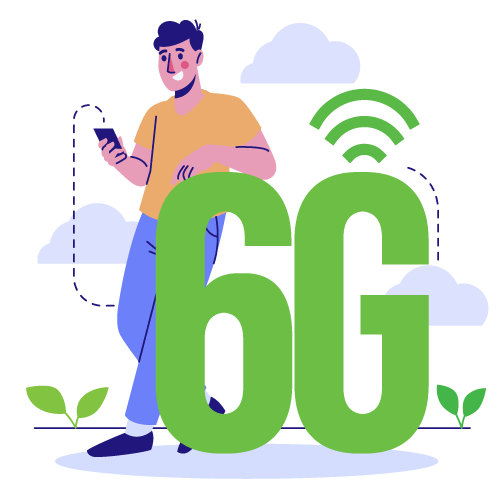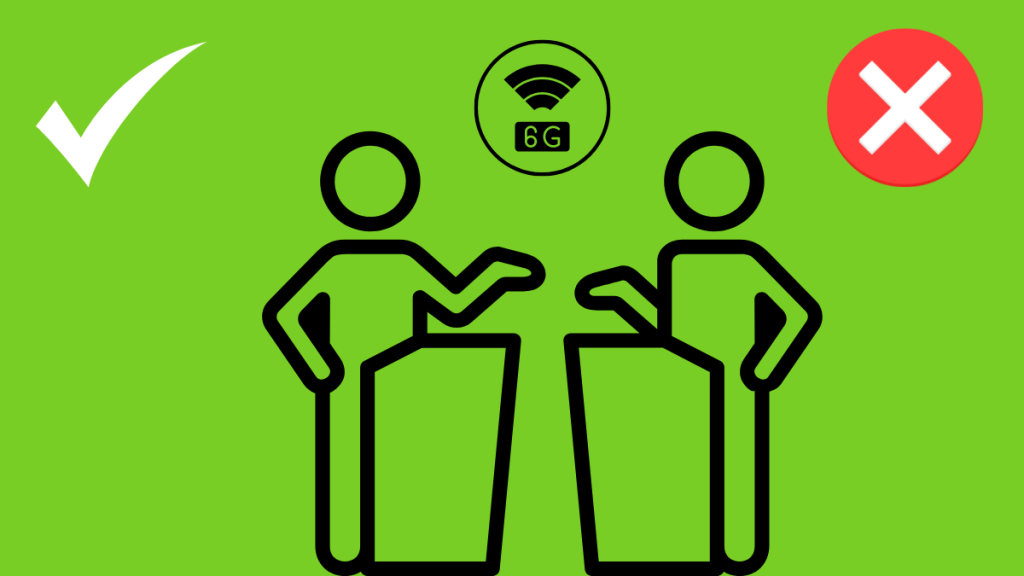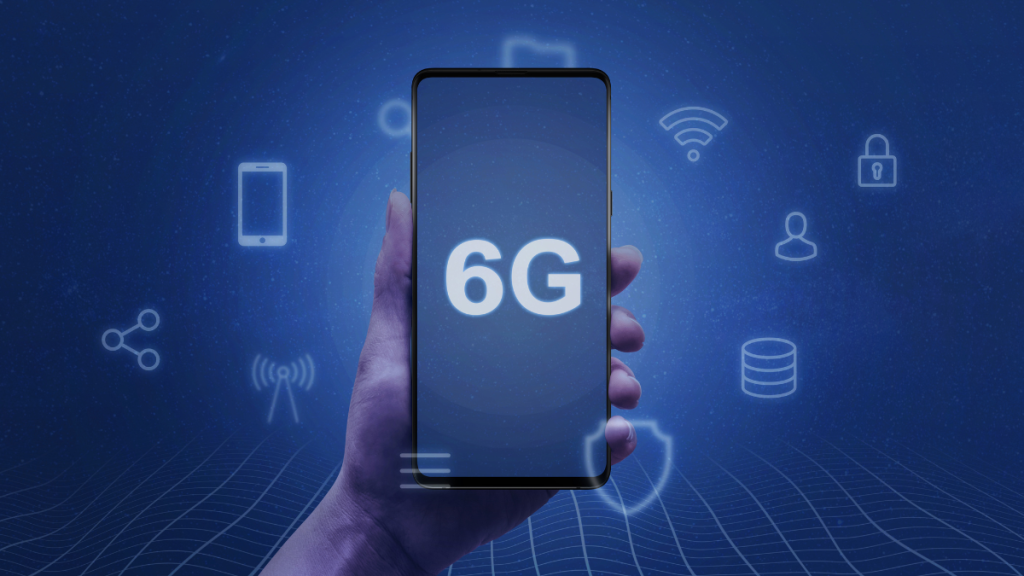6G is approaching as 5G, which arrived in November 2020, continues to offer lightning-fast speeds and near-zero latency. Since then, 5G has gradually become a part of our daily lives, making a significant impact.
Now, with 6G on the horizon, the question is: do we really need it? Is this technological leap truly necessary, or are we just chasing the next big thing for the sake of it? Could 6G really transform our connectivity, or is it just another tech buzzword? We have the answers!

Unlike 5G, which reaches speeds of 10 Gbps, 6G could offer up to 100 Gbps.
What is 6G technology and how it works?
6G technology represents the next step in the evolution of mobile networks, aiming to deliver significant improvements over 5G.
Here’s what it aims to offer and how it will work.
- Download Speeds: Up to 100 Gbps (10 times faster than 5G)
- Latency: Less than 1 millisecond (very responsive)
- Frequency Bands: Use of millimeter waves and terahertz frequencies
- Connectivity: Ability to connect thousands of devices simultaneously
- Applications: Enhanced augmented reality (AR), virtual reality (VR), and support for new immersive technologies
With 6G technology, data transfer speeds are so fast that you could download a 50 GB video game in just 40 seconds.
Amazing, isn’t it?
Which country has 6G Internet?

At the moment, no country offers commercial 6G internet services. 6G is still in the research and development stage, with preliminary tests underway in countries like China, the U.S., South Korea, and Japan.
These countries are working on building the infrastructure needed for 6G, but there are no commercial services yet. It is expected that 6G could start being available around 2030, once the technology and infrastructure are fully developed and tested.
When is 6G coming to Canada?
6G does not have a specific launch date for Canada yet. Initial testing announcements might start in the 2030s, but widespread adoption is still a long way off.
How fast is 6G?
100 times faster than 5G!
6G represents the natural evolution of mobile networks. With estimated speeds of 1 Tbps, it’s 100 times faster than 5G. This isn’t just about faster downloads; it marks a new era for augmented reality, artificial intelligence, and the Internet of Things (IoT).
But that’s not all. 6G also aims for incredibly low latency, down to the microsecond. This means instant responses, whether for autonomous vehicles or remote operations.
Do we really need 6G?
The question “Do we need 6G?” is increasingly divisive. On one hand, some users question whether 6G is truly necessary, especially when 5G is not yet fully adopted everywhere. For them, 5G already provides impressive speeds and reduced latency, so why push for even more advancement?

On the other hand, others see 6G as an essential advancement. With the rise of technologies like the Internet of Things, artificial intelligence, and augmented reality, some believe that current infrastructures will eventually be surpassed. According to them, 6G will address the growing demands for connectivity and ultra-fast data processing.
Ultimately, the adoption of 6G will depend on future use cases, but for now, not everyone is convinced it should be an immediate priority.
Our Opinion
At PlanHub, we are clearly in favor of 6G. Why? Because it’s poised to transform everything. With unprecedented speeds and ultra-low latency, we’re looking at instant augmented reality, flawlessly functioning connected devices, and even ultra-secure autonomous vehicles. While 5G is impressive, 6G represents the future. It will unlock possibilities we haven’t even imagined yet.
6G vs 5G
6G represents the next step in the evolution of mobile networks. While 5G is already impressive, 6G promises to push the boundaries of current technology. Here’s a quick overview of the potential advantages that 6G could offer:
| Aspect | 5G | 6G |
|---|---|---|
| Connection Speed | Very fast, up to 10 Gbps | Ultra-fast, up to 1 Tbps |
| Response Time | Response in 1 millisecond | Response in a fraction of a millisecond |
| Device Connectivity | Enhanced for connected devices | Management of billions of devices |
| Immersive Experiences | Good for augmented reality | Total real-time immersion |
| New Possibilities | Ideal for online gaming and streaming | Perfect for autonomous vehicles and advanced technologies |
Is 6G harmful to humans?
The question of whether 6G is harmful to health is still under debate. Currently, research on the millimeter waves that 6G will use is somewhat limited. Concerns are similar to those raised with 4G and 5G, but so far, no solid studies have demonstrated health risks.
Regulatory authorities are closely monitoring the situation and establishing limits to protect public health. As long as these standards are adhered to, the risks are considered low.
In summary, there is no concrete evidence that 6G is harmful to us at the moment. However, as always, it’s best to stay informed and follow expert recommendations.
FAQ
When can we expect 6G to be widely available?
6G is expected to begin deployment around 2030, although research and testing are already underway.
Will 6G replace 5G, or will they coexist?
No, 6G will not immediately replace 5G; the two technologies will coexist for a while before 6G becomes predominant.
What new technologies will 6G enable?
6G will enable major advancements in augmented reality, artificial intelligence, and massive IoT connectivity, with applications that are still unimaginable today.
Will 6G work on current smartphones, or will we need new devices?
Current smartphones will not be compatible with 6G; new devices will be required to take advantage of this technology.
Is 6G technology safe for human health?
There is no solid evidence yet that 6G is harmful to health, but further research is needed to ensure its safety.
What is the difference between 6G and 7G?
7G is still in the research and design phase, while 6G is the technology currently being developed to enhance connectivity and performance.
How will 6G impact everyday life and businesses?
The 6G will transform digital interactions, enhance professional applications, and make urban environments smarter and more interconnected.






